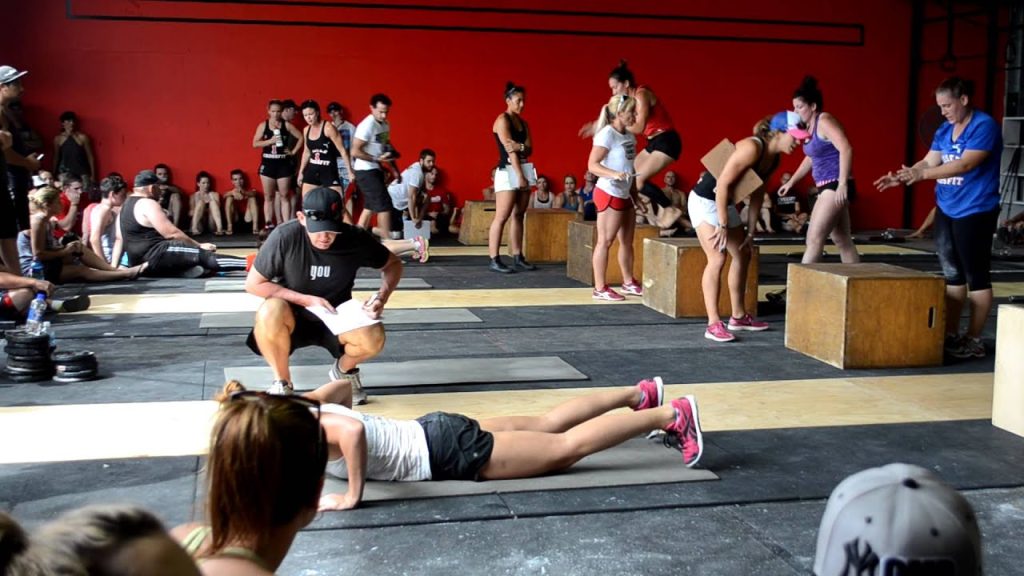CrossFit is a very popular fitness modality across the world.
What started in garage gyms and backyards in the early 2000s has evolved into a functional fitness mogul, with thousands of affiliates across the world and hundreds of thousands competing in the CrossFit Open each year.
If you’re on the outside looking in, though, CrossFit can be intimidating.
It seems like there’s a ton to learn, everyone is super fit, and you might make a fool of yourself if you just show up for a class.
That feeling is common, but it couldn’t be further from the truth. In fact, the only way to really know what CrossFit is like is to try it!
Still, it might be best to know a little more about the sport and feel up to speed before you walk into a box.
In this massive guide, we cover everything you need to know about CrossFit for beginners.
From how a class runs to the many acronyms you’ll eventually learn (but first forget), to answering popular questions like “Is CrossFit dangerous?”, we tackle everything beginners generally as about the sport of fitness.
What Is CrossFit?

CrossFit is a functional fitness program. They define their methodology as “high-intensity, constantly varied, functional movements”. Let’s break those down into base parts:
- High-Intensity– lifting heavy weights, challenging cardio workouts, coordinated gymnastics movements, and other skill-based challenges
- Constantly Varied– CrossFit workouts change every day. You might do strength training Monday, swim or run on Tuesday, then pull-ups and burpees on Wednesday. The different modalities help make up CrossFit’s definition of fitness. The goal is to be “good” at a little of everything, not great at one thing (such as cardio).
- Functional Movements– CrossFit uses full-body exercises that mimic the types of movement you do outside of the gym. For example, a thruster combines a squat (strengthening leg muscles used to walk up stairs) and an overhead press (strengthening muscles used to put things on a high shelf). Nearly every CrossFit exercise uses multiple muscle groups.
Who Is CrossFit For?

Everyone! But seriously, it is. The biggest mistake most people make when it comes to CrossFit—or the gossip they are “educated” with—is that CrossFit is only for elite athletes or super fit people.
This is wrong and goes against everything CrossFit stands for as a fitness methodology.
Just because you’re out of shape or can’t do a pull-up doesn’t mean you shouldn’t do CrossFit. And it definitely doesn’t mean you should wait to get your first pull-up so you’re “ready” to start CrossFit.
The key, as CrossFit says, isn’t to change the type of exercise you’re doing. As they say, don’t change the prescription.
All of us have bodies designed to squat, press, run, swim, and row. The key is to change the intensity of the prescription so that it meets your fitness needs.
Check out this video of a 94-year-old doing CrossFit for an example of how you might scale a workout to meet your needs (and for proof that it’s a sport anyone can do).
How Does CrossFit Work?

This question is tough to answer because each CrossFit affiliate is different. A CrossFit affiliate is a gym licensed to call themselves a CrossFit facility.
Each coach on their staff holds at least a CrossFit Level 1 Certification, meaning they are qualified to teach CrossFit.
Many continue their education beyond the L-1, opening the L-2 through L-4 certification, or specialize in gymnastics, weightlifting, or kettlebell training.
It’s the responsibility of the coaches and gym owners to create a strong CrossFit product and build a community around fitness. Staying within the confines of the sport, they can approach that however they see fit.
Basically, though, here’s what you need to know. Show up for a one-hour class at a CrossFit affiliate near you. You’ll likely do some combination of strength training, cardio training, and gymnastics skill work in that hour.
There will probably (hopefully) be a warmup and a cool down. And chances are, you’ll be in a class of between three and fifteen people (more in a popular city gym) at various levels of fitness.
Your coach should help you scale the workout so it meets your needs.
Is CrossFit Dangerous?
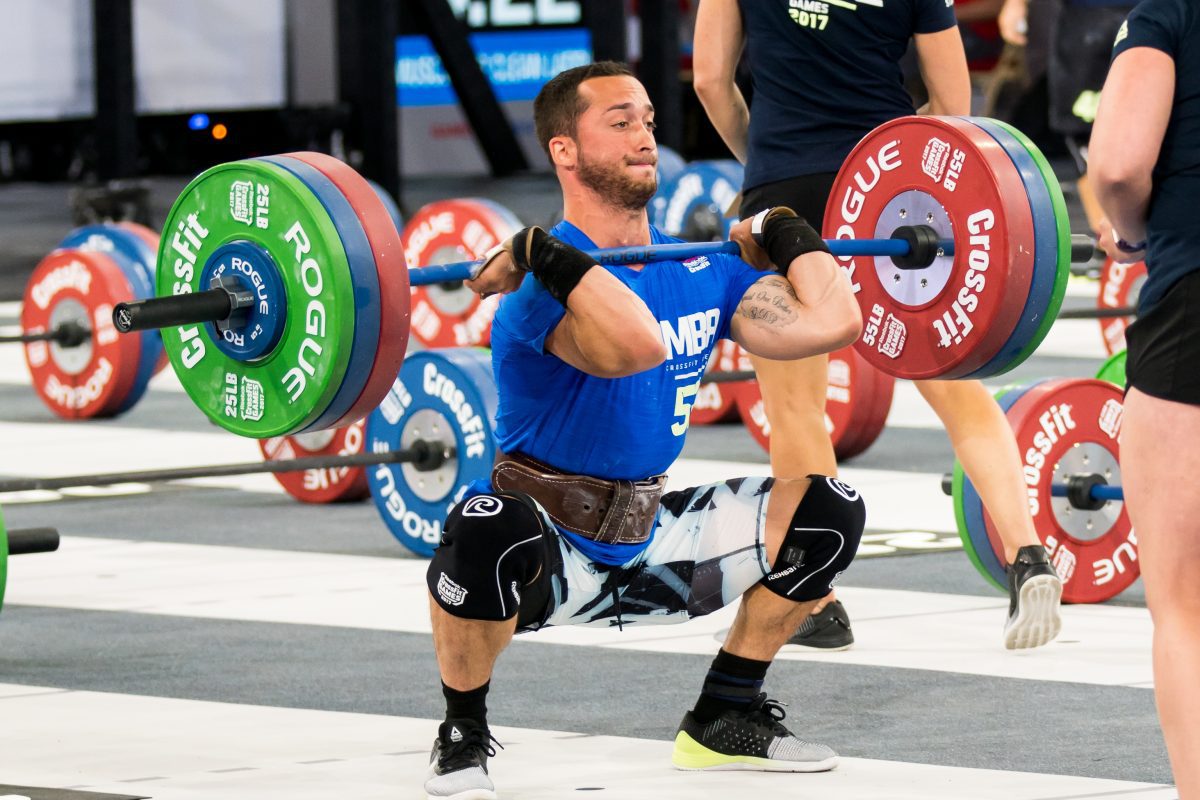
CrossFit is dangerous just like bodybuilding, swimming, running, and doing manual labor are dangerous.
True, CrossFit has received a bad wrap over the years for giving users rhabdomyolysis (a deadly condition caused by excessively overworking your muscles).
But the truth is that the term “CrossFit” is very subjective based on who is coaching, who owns the gym, their experiences, and your current fitness level.
If you have good coaches instructing you and you’re smart enough to listen to your body, CrossFit is as safe as any other fitness methodology.
CrossFit Class
Here’s how a one-hour CrossFit class will typically go.
Dynamic Warm-Up
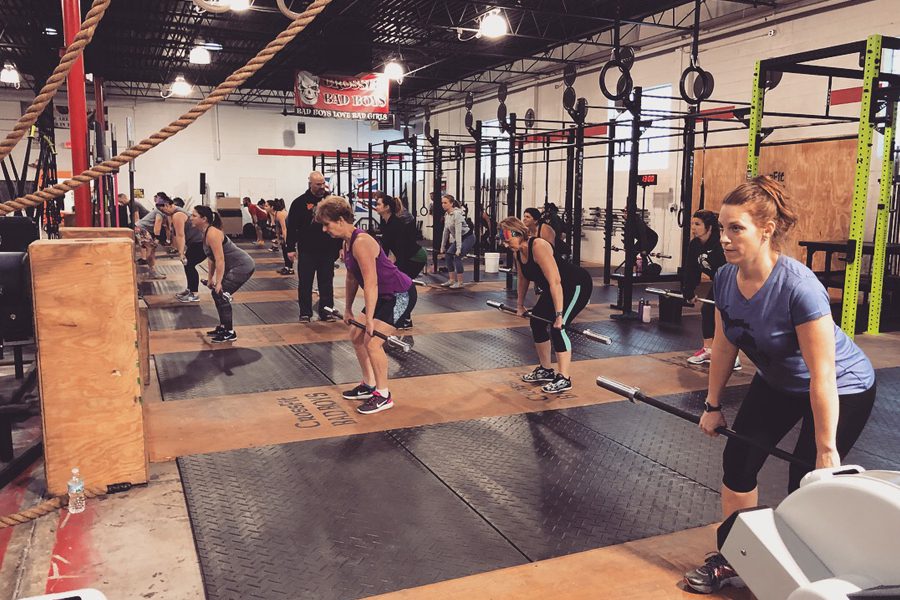
Dynamic warm-ups use movement to stretch your muscles and prepare your body for exercise.
Warm-ups help decrease the risk of injury and also allow athletes unfamiliar with the WOD’s (workout of the day) exercises practice in a slower, uncompetitive environment.
The dynamic warm-up will typically last ten to fifteen minutes depending on the training to follow. If you’re doing heavy squats or deadlifts, it might be longer.
Skill/Strength Work
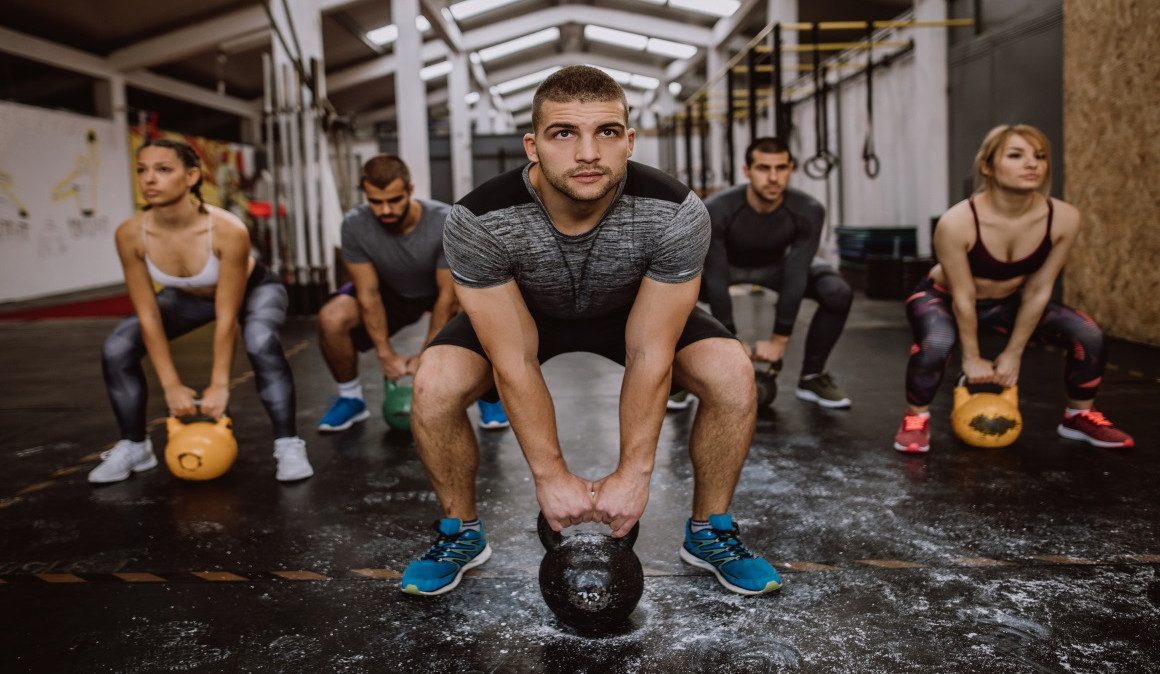
What was once known as “CrossFit Strength Bias” is now the most ubiquitous model for CrossFit gym programming.
After a warm-up, you’ll typically spend twenty minutes focusing on a heavy barbell, kettlebell or dumbbell exercise or work on gymnastics movements like muscle-ups, handstand push-ups or L-sits (don’t worry, these are all scalable).
These are typically not timed. They might follow a five sets by five reps scheme with timed breaks in between to recover.
WOD
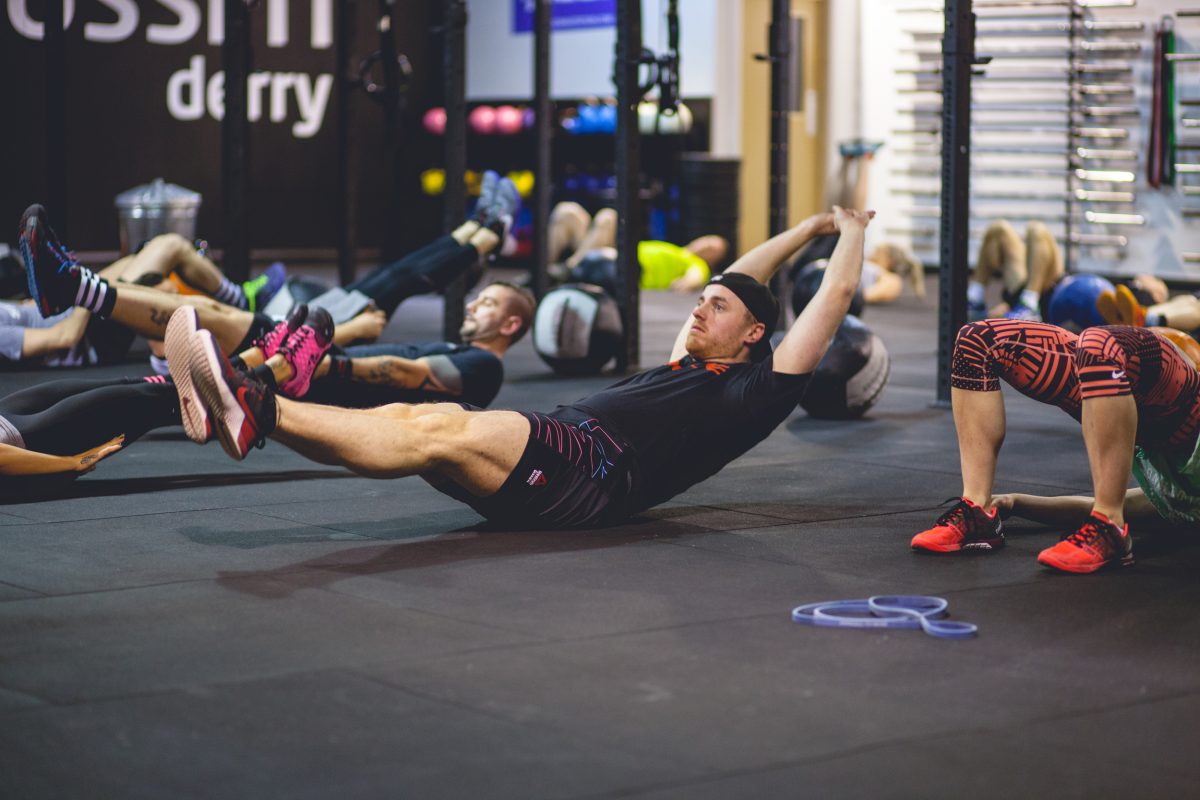
The WOD is when coach yells “3-2-1 GO!” and you complete a workout as fast as you can with good form.
Popular WOD formats include EMOMs (every minute on the minute), AMRAPs (as many rounds as possible) and Hero WODs.
Cool Down and Stretching

Your last ten minutes of class will be devoted to stretching, putting weights away, and recovering from the workout. Many gyms now use ROMWod for this, a subscription-based mobility and stretching product that gives athletes a daily stretching WOD.
What to Expect at First CrossFit Class?
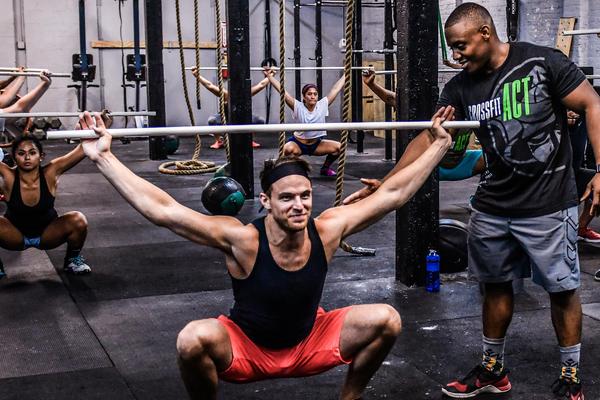
CrossFit prides itself on being a supportive community. I don’t know where your box is or who the coach is that will be guiding you, but I can almost guarantee they will be very supportive and welcoming.
The coach should ask you how you’re feeling and take that feedback into consideration. He or she might introduce you to the class if you say it’s okay.
He will likely check in with you a few times during the workout, and offer modifications to exercises you either can’t do or aren’t comfortable with.
You will get a good workout and may even meet someone you’ll see at future classes. CrossFit gym members are quite social, but if you prefer to keep to yourself, no one’s going to bother you either.
CrossFit WOD Movements
We could spend all day naming off CrossFit exercises and how to do them.
Peruse Athletic-Muscle’s training section for tons of information on the major CrossFit movements.
Instead, we’ll break exercises down into three groups: cardio, weightlifting, and gymnastics.
This is a good place to start. There are also links to some of the resources we’ve created for these exercises. Oh, and here are the nine fundamental CrossFit movements
Cardio
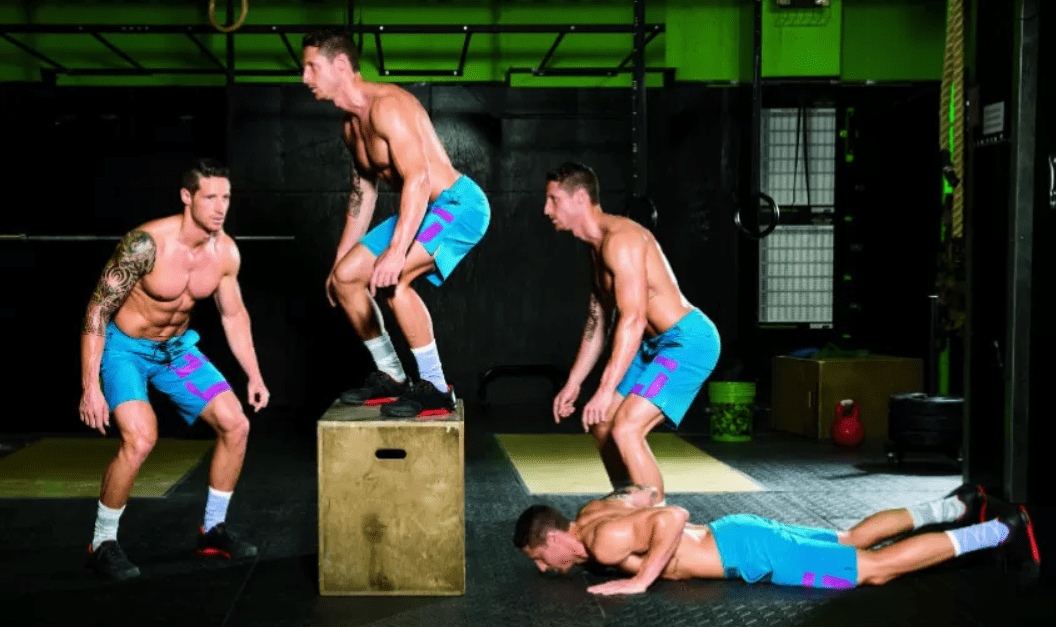
- Running- Sometimes outside, or using the Trueform or other treadmills.
- Rowing- Rowing is a full-body cardio exercise performed indoor using an ergometer. Check out these 7 Tough Rowing Workouts.
- Swimming– Don’t worry, swimming won’t come up often. Your gym might have an occasional summer workout where you meet at a pool.
- Biking- If you start CrossFit the assault bike will be your friend. Just kidding, no it’s not.
Read Also: Best Fitness Trackers For CrossFit For Data Driven Improvements
Weightlifting
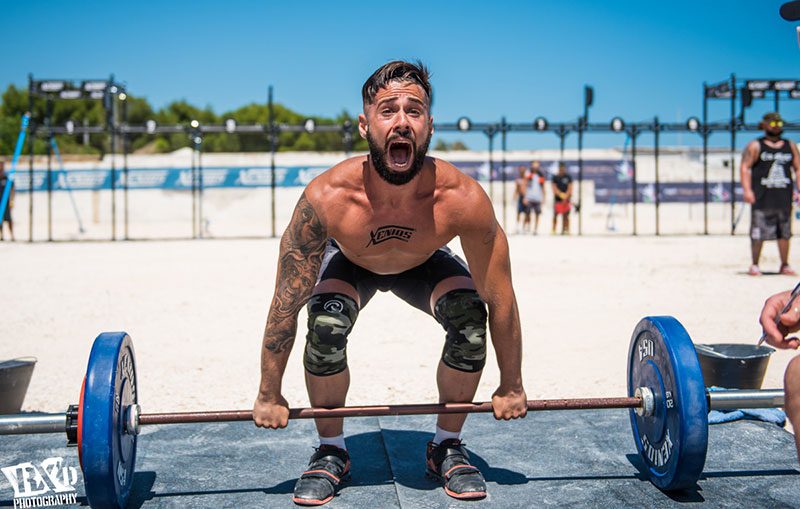
- Front and Back Squats– Many coaches consider squats to be the “king” of fitness exercises. They develop your legs, core, and upper body muscles.
- Deadlifts- Deadlifts come up in
- Cleans– one of two Olympic weightlifting exercises. Taught as the “squat clean” and “power clean”, which means catching the bar in different positions.
- Snatches- the other Olympic weightlifting exercise.
- Overhead Presses– Pushing the bar over your head to a lockout.
- Thrusters– Thrusters combine a front squat with an overhead press. You might do these with dumbbells or a barbell.
- Push Presses– You’re allowed to use your legs and a hip drive while doing the overhead press. This helps you do more weight. Athletes can usually add 30% more weight than the press.
- Push Jerks– Essentially a push press, but you’re able to drop under the bar and “catch it”. Athletes can usually add 30% more than the push press.
- Kettlebell Swings– Kettlebells come up in many forms in CrossFit (snatches, turkish get-ups, etc.) but the swing is most common. You might do Russian style (to eye level) or full overhead swings depending on the WOD.
Gymnastics

- Pull-ups– Taught as both strict and “kipping” pull-ups, the latter of which are a hot topic in fitness communities outside of CrossFit.
- Muscle-ups– If you’ve ever seen CrossFit on Instagram you’ve probably seen muscle ups. They combine a pull-up and a dip in one motion and are done on rings and pull-up bars.
- Toes to bar– an abdominal-heavy and grip intensive gymnastics exercise.
- Handstand Push-ups– If you can’t sit on your head and press yourself up, no worries. There are plenty of progressions before you’re knocking out handstand push-ups.
- Burpees- Burpees are one of the darlings of CrossFit. You’ll never love them, but they’ll get you fit.
CrossFit WOD Names
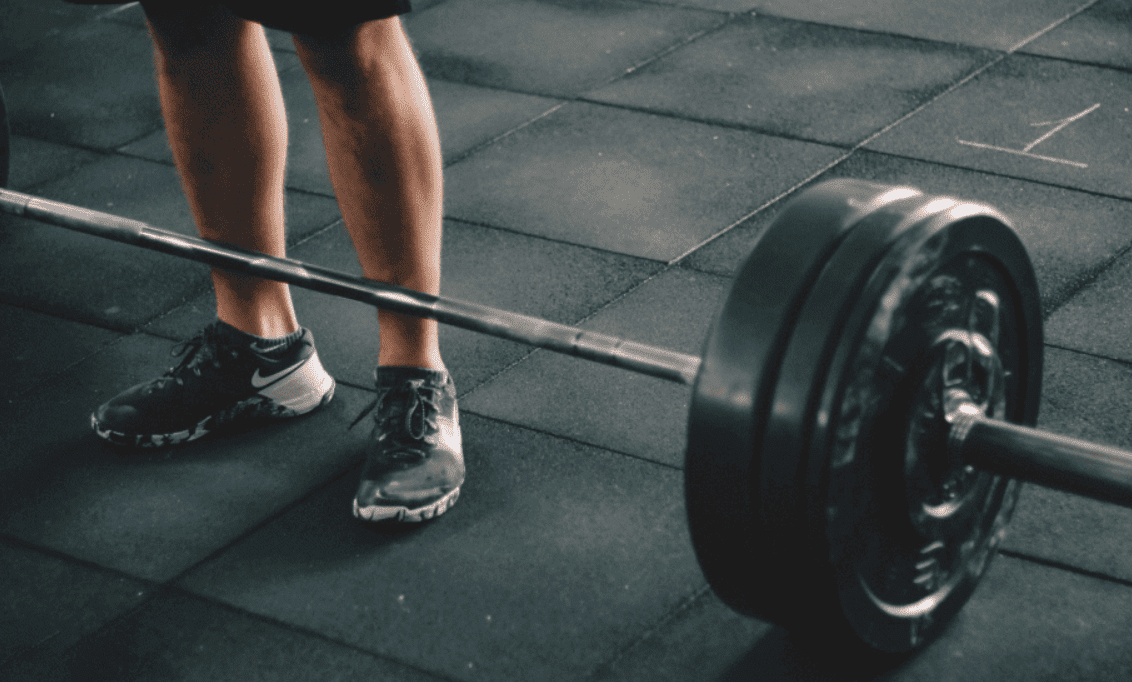
One of the most unique parts of CrossFit is that many of the workouts are named.
Honestly, two CrossFitters talking about CrossFit around non-CrossFitters might sound like they are speaking another language. Or just talking about a ton of different girls they know.
There are “The Girls” and the “New Girls”. Some of these workouts like Helen and Fran have been around since CrossFit went mainstream in the early 2000s.
Hero WODs are designed to be grueling. They are meant to test your mental and physical fortitude as you honor a fallen soldier or war hero.
WOD Acronyms
Besides names of workouts, there are also several terms you will hear a lot in CrossFit. CrossFit is quite fond of acronyms. Here are some of them.
- EMOM– stands for every minute on the minute. A type of interval training with programmed work and rest breaks. Not always as taxing as some workouts but can still be very challenging. Sometimes used for warm ups.
- AMRAP– stands for as many rounds as possible. You might do a twenty minute AMRAP where you complete as many cycles of a workout as possible in twenty minutes. Cindy is an example.
- Metcon– short for “metabolic conditioning”. An EMOM or an AMRAP is a metcon (see, told you it’s a different language). Any time you’re breathing heavy, you’re probably doing a metcon of some sort.
Other Common CrossFit Terms

Here are some other terms and phrases you’ll hear. (Told you there was a lot.)
- “For Time”– Most WODs, especially metcons, are “for time”. This means you complete the workout as fast as you can then log your score so you have something to compare to in the future when you do it again.
- Mobility- Another way of saying stretching. There are plenty of mobility resources favored by the CrossFit community like ROMWod and MobilityWOD.
- Paleo- Paleo was (and still is in many cases) CrossFit’s #1 diet protocol. It means eating lean meats, fruits, vegetables, nuts and seeds and limiting things like grains and dairy.
- Zone- In the early days of CrossFit, the Zone diet was as popular as paleo. You’d eat your protein, fat, and carbs for the day in an optimal zone of 30%, 30%, 40%. Helped a lot of people lose weight but isn’t always sustainable.
- Macros- Short for the three macronutrients: protein, fat, and carbohydrates.
- Rx’d– “Prescribed”. This means using the prescribed weights of movements for a workout and not scaling. For example, doing an RX’d WOD might mean you did a tougher exercise like muscle-ups instead of scaling to push-ups and dips or another progression.
Can I Do CrossFit At Home?
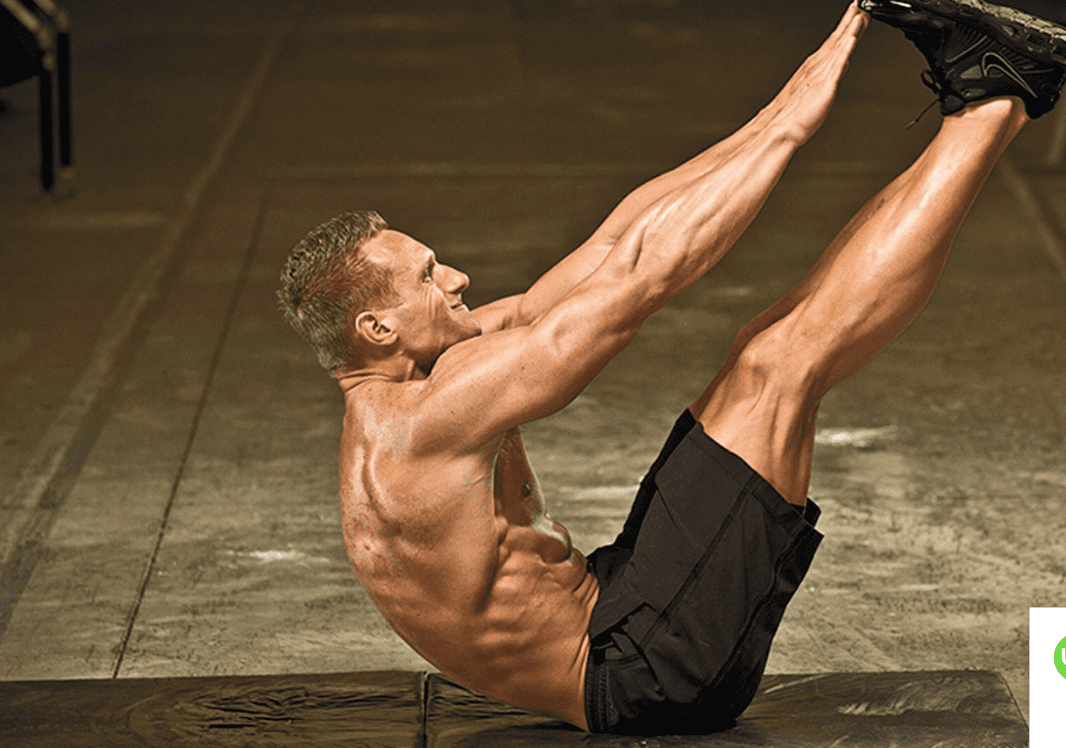
CrossFit prides itself on being very scalable. You surely can do CrossFit WODs at home, but you’ll need to modify many of the movements if you don’t have the right equipment.
A home gym would need at least one barbell, a squat rack, several kettlebells, a set of rings, a rower, a jump rope, a pull-up bar, and rubber mats.
Those are the basics. In all likelihood, you wouldn’t have all the equipment needed to follow some of the competitive CrossFit sites like Invictus or MisFit.
While you can do CrossFit at home—and many people do—a CrossFit gym will have all the equipment you need to do the sport.
What Workout Gear Do CrossFit Beginners Needs?
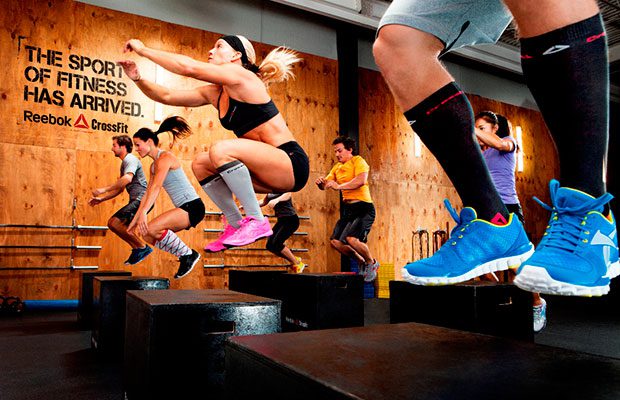
You’ll want a good pair of workout clothes—shorts, an athletic t-shirt, good socks—and a good pair of shoes. Reebok, Nike, and several other companies make a CrossFit shoe (only Reebok can call theirs CrossFit, some others call it “functional training).
If you only have joggers for your first class, that’s fine.
Some Advice For Beginners
Honestly, just have fun! It doesn’t matter how experienced or inexperienced you are.
Plenty of people before you have shown up for a class overweight, injured, not knowing any of the acronyms, and generally unsure what to expect.
There will be people in your class better than you at CrossFit, but you might also be surprised to find other people in your situation, too.
Ask any CrossFitter and they’ll tell you their first experience with CrossFit was something they’ll always remember. You’ll look back on it fondly down the road.
Just be safe, try your best, and ask questions if you don’t get something. It’s bound to be a good experience!
Wrapping Up
Told you this was a massive guide. Hopefully you feel better about the sport of fitness and are less intimidated about CrossFit.
The truth is that all of us were where you’re at now at one point. But CrossFit is sort of like swimming—you can read about it, but eventually you’ll need to jump in the pool and figure it out.
In the meantime, peruse our training blog for WOD guides and more information on CrossFit for beginners.

